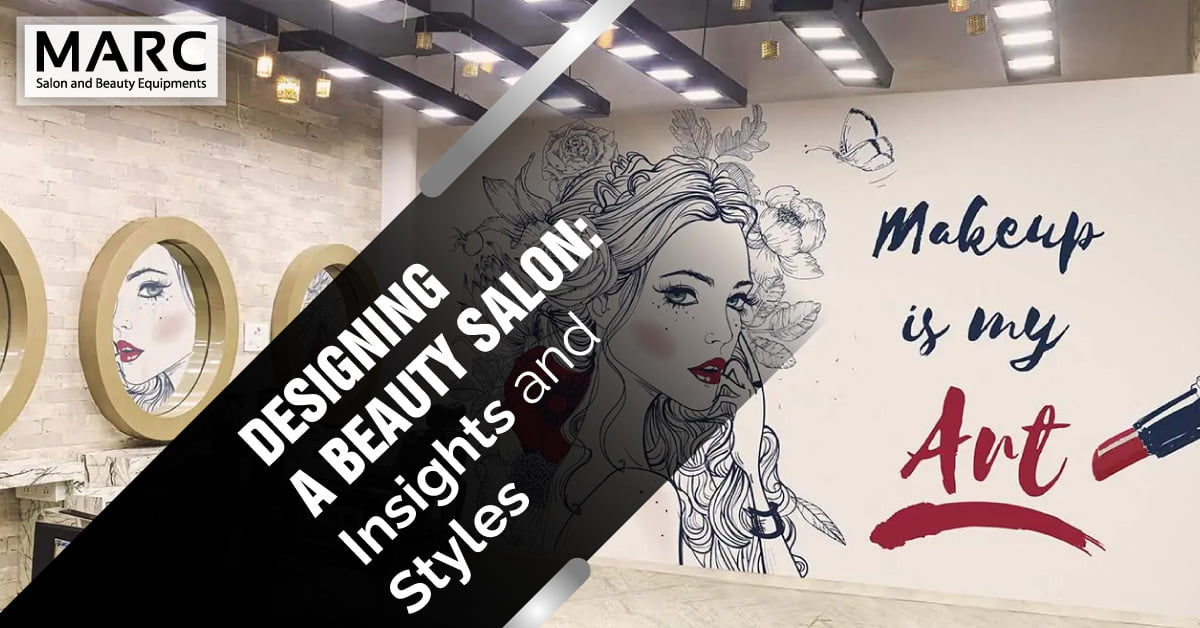
One area where you shouldn’t cut corners is your beauty salon’s interior design. Because you offer elegance and sophistication, innovation has become increasingly important in the beauty industry. Creatively speaking, your salon reflects your ideas about beauty and how you wish to share those ideas with the world.
The owners of a beauty salon should pay close attention to detail or, even better, hire a professional salon designer. For a space to be well-designed, it must adhere to a few rules that ensure the comfort, happiness, and even inspiration of its occupants or users. To do this, your furniture, materials, waxing equipment, and ornamental things should all be neatly arranged. Similarly, if your salon offers services like hairstyling, cosmetics application, waxing, massage, and more, you want the space as a whole to seem cohesive.
Three Things to Remember for a Stunning Salon
No need to hire an expensive interior designer to identify or develop the perfect look for your salon. With some motivation and advice, you can open a salon that you and your customers will love. Here are a few things to remember, along with explanations of why they’re crucial.
1.Your design style identifies you to clients
Think about the ideal customer experience you wish to provide and how those values will inform your service. Knowing what you want and what’s important to you will help you build an environment that reflects those things.
Once you have a clear idea, it’s time to start brainstorming and gathering visual references. Here are some different approaches to design you can employ depending on what you want to highlight.
Minimalist:
Wish to appear well-groomed and business like, yet with a bit of swagger? This aesthetic is one to consider. “Less is more” is the credo of the minimalist. The foundation of this design should be sturdy architecture. It’s also crucial to keep things minimal with furniture that has clean lines and simple techniques. An additional step toward achieving a fantastic minimalist salon is the addition of a splash of color.
Country:
This is the design aesthetic to go for if you want to transport your customers to a warm and welcoming home. The rustic aesthetic suggests ease and relaxation in touch with nature. Wooden details, natural fabrics, wicker, a profusion of wildflowers, and traditional touches like wrought-iron chandeliers are all welcome.
2.Essential design principles and elements
Think about balance, rhythm, proportion, focus, and harmony if you don’t want to hire an interior designer.
Balance:
Find harmony by scattering accessories around your salon. Don’t overcrowd some sections while leaving others bare. As you organize things, keep the visual weight in mind as well.
- Rhythm:
This idea is implemented while designing the flow from one section of your salon to another. Use screens or partition walls to create seamless transitions.
Proportion:
Don’t forget to maintain things in balance. Large windows, for instance, preclude using small, delicately framed cupboards. Pick items that are of a similar or contrasting size.
Emphasis:
Pick something to serve as the showpiece of your living space. An eye-catching sculpture, painting, or screen depicting magnificent landscapes will become the focal point of your salon.
Harmony:
This is the end goal you’re shooting toward with your salon’s layout. Even if you go for an eclectic look, there needs to be cohesion between different parts of the space and the various design elements.
To remember space, lines, form, light, color, texture, and pattern are the seven components of interior design. If you follow the guidelines mentioned above, you’ll have a well-organized design.
- Space, lines, and form:
design based on the scale of the room and its accompanying architecture. Windows, doors, ceiling height, and other structural features can all be manipulated to achieve the desired aesthetic better. For instance, if you’re working with a limited amount of square footage, you can make the room more expansive by using a light, neutral color palette and straightforward, unadorned furnishings. This can be useful for creating the impression of ample space and preserving anonymity.
- Light, color, texture, and pattern:
Proper lighting is crucial for efficiently facilitating work and establishing a soothing ambiance. Use well-placed artificial lighting or install dimmable ones to set the appropriate ambiance. Always make intelligent choices while incorporating color. Light colors are preferable if your living quarters are on the cramped side. You should avoid making your customers feel like they are being held captive in a closet-sized space. After that, finish the room by adding soft furnishings with a rich texture, like pillows or upholstery.
Incorporating your brand’s aesthetic into the salon’s layout and design should be a top priority. You have finally realized your dream. Whatever atmosphere or aesthetic you have envisioned in your head can only be achieved by you. Write down your thoughts or consult an expert to help determine what you want to make. When making important choices, keep your ideal customer in mind. To a large extent, success depends on your ability to anticipate what people would enjoy.
